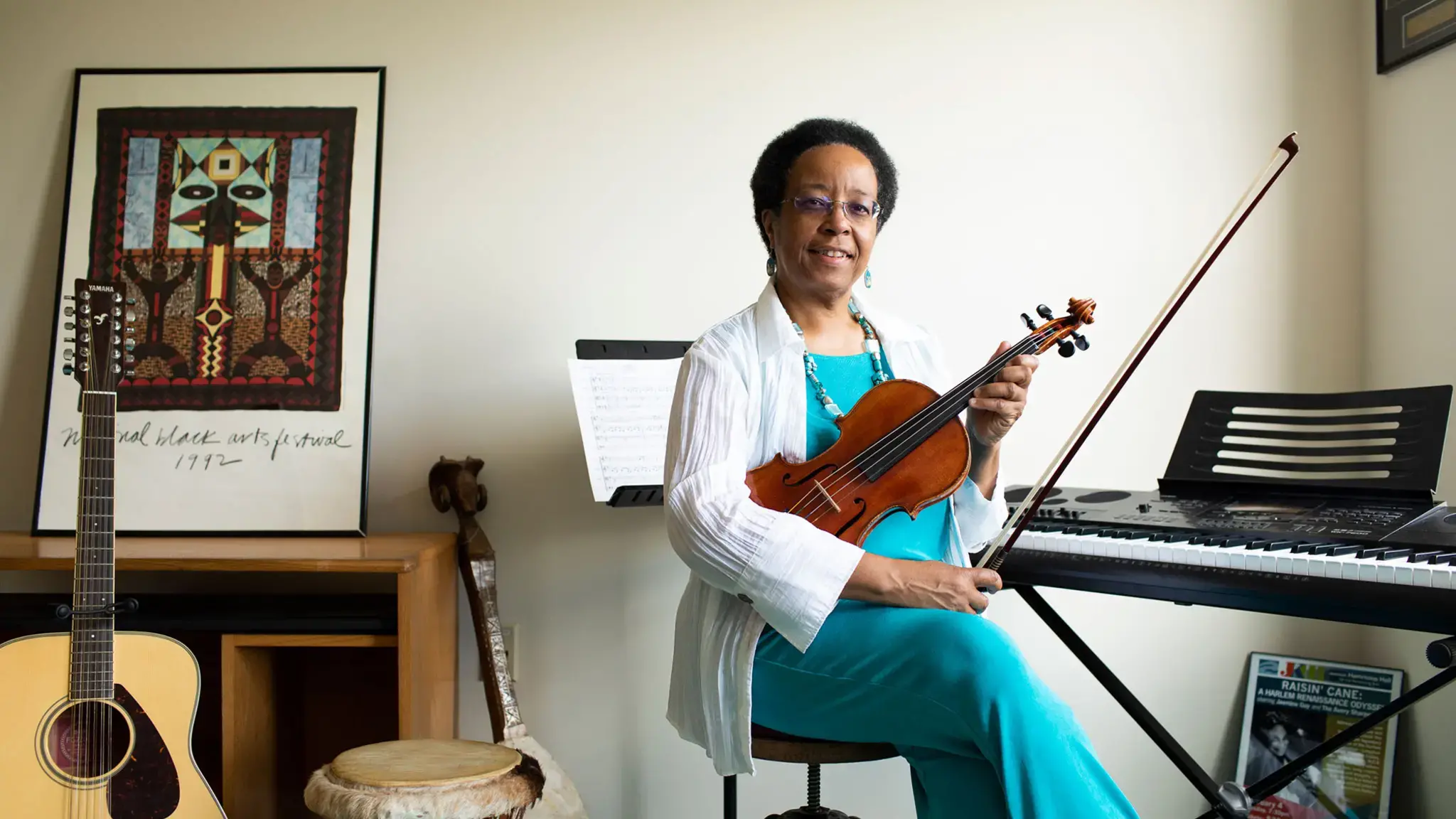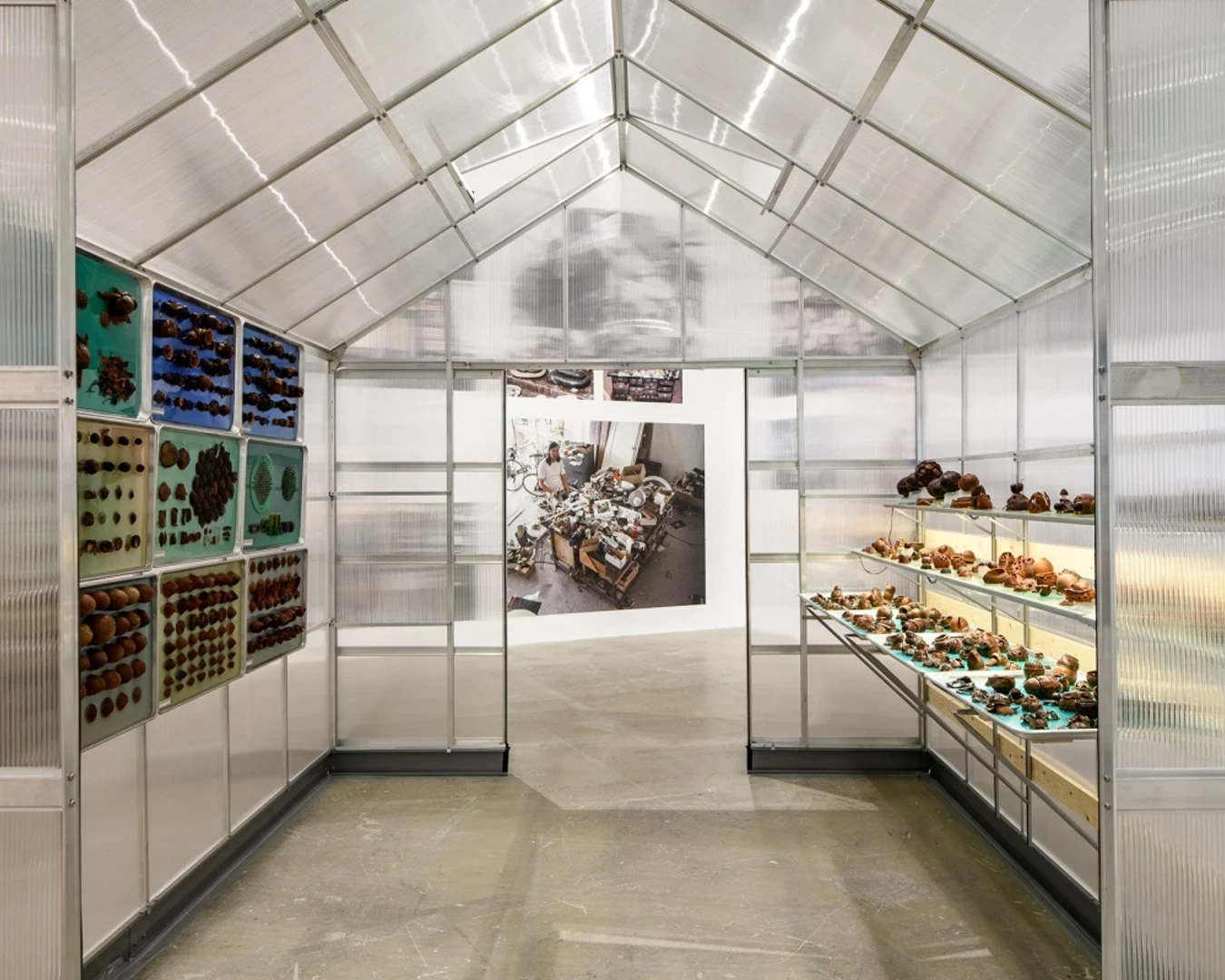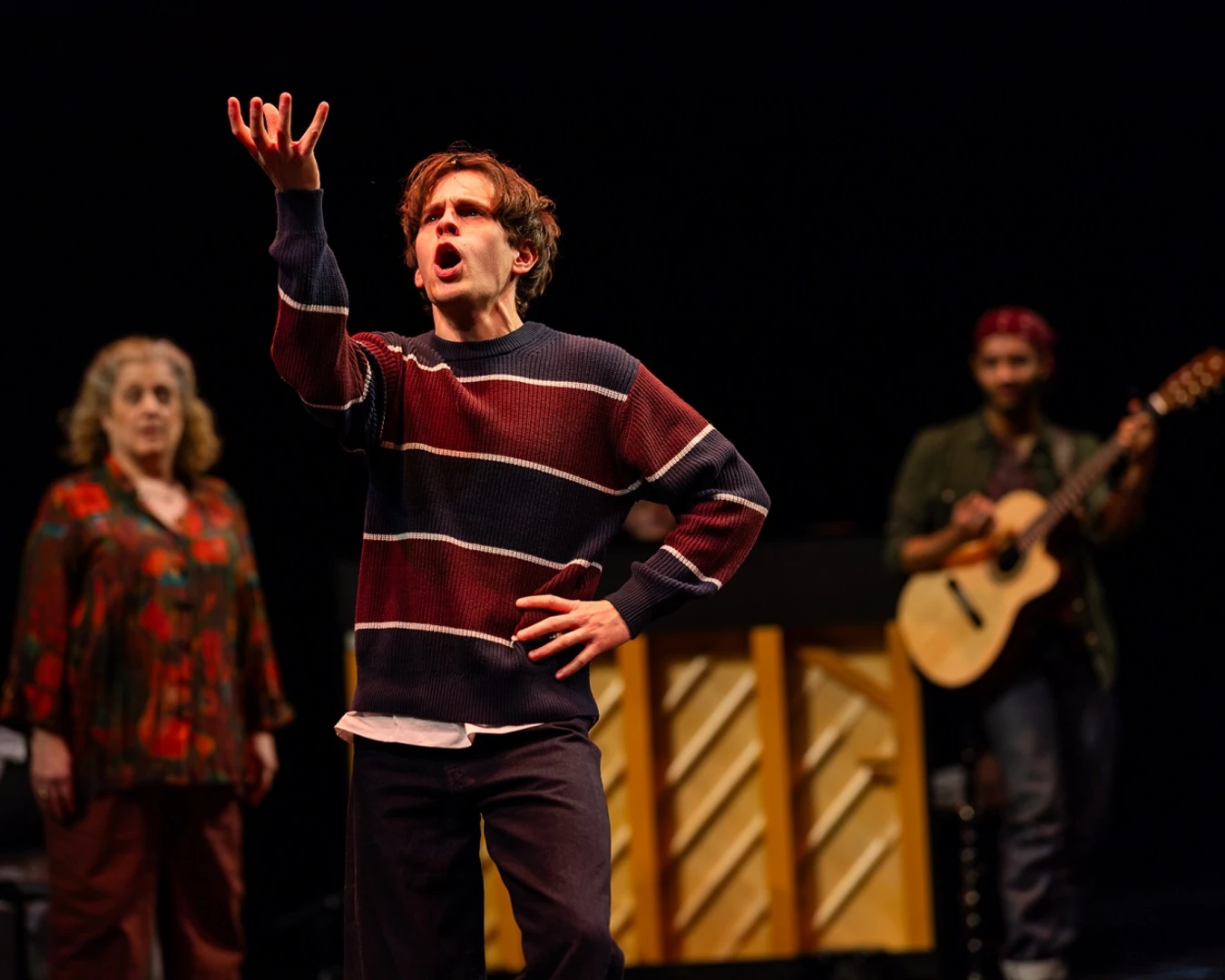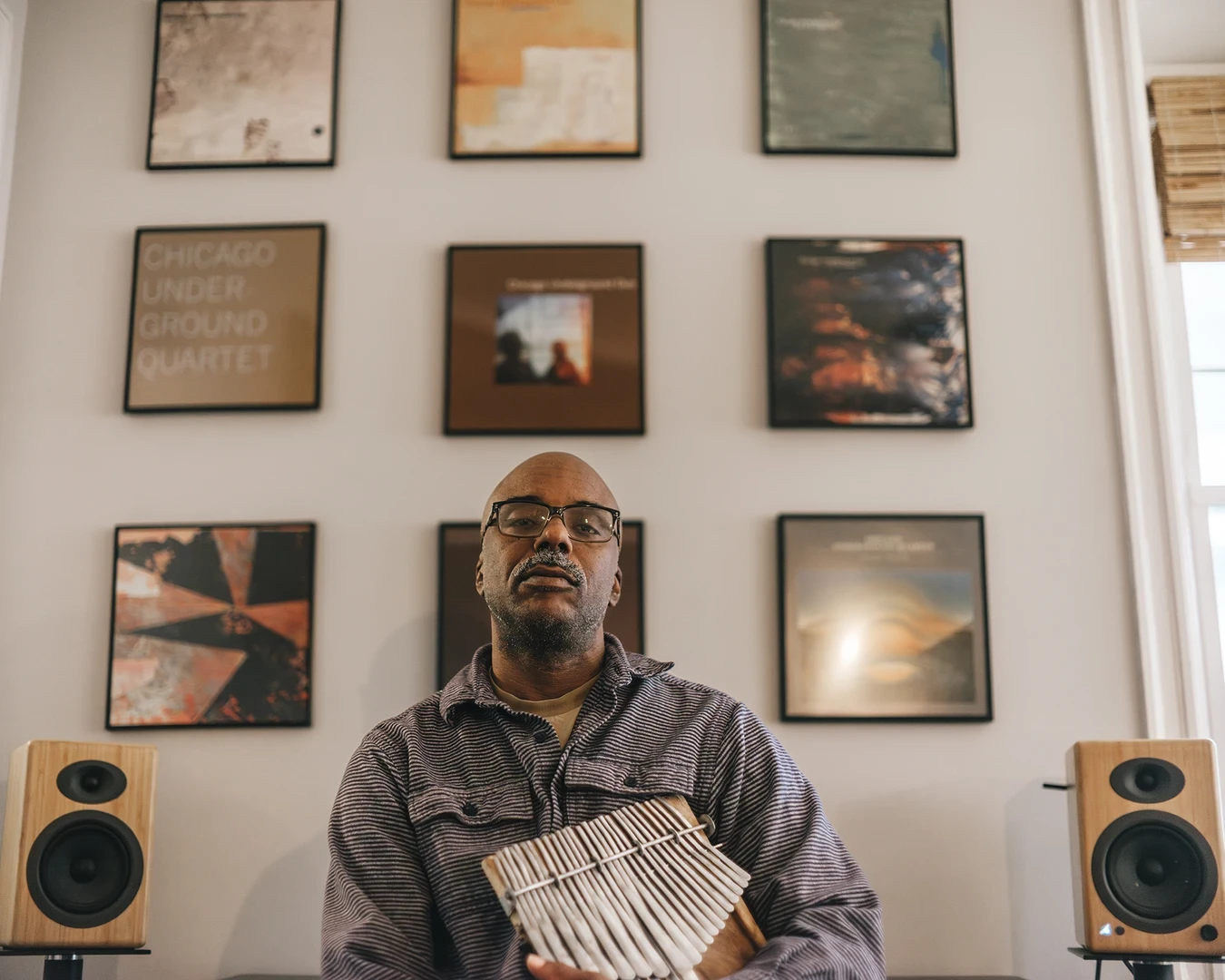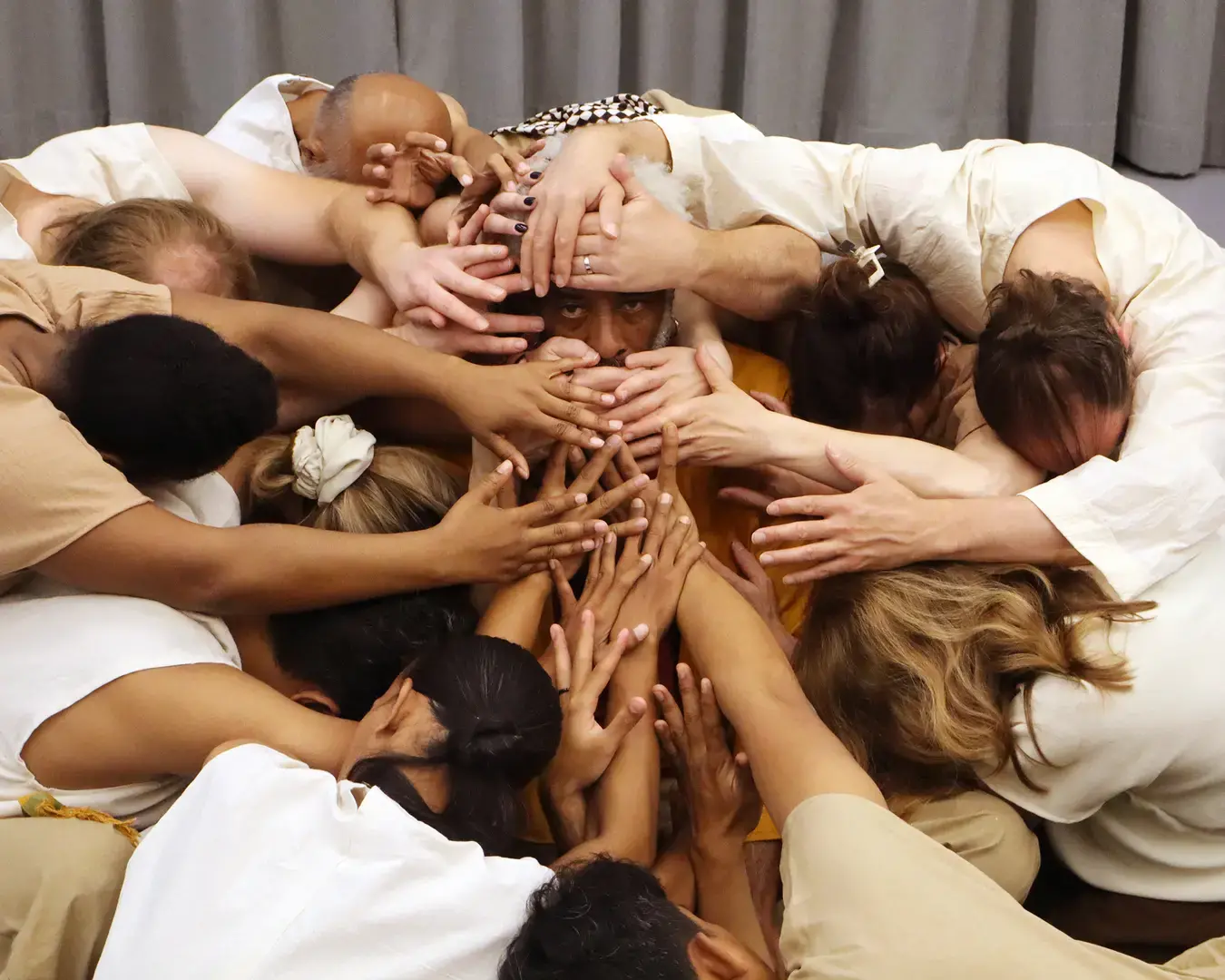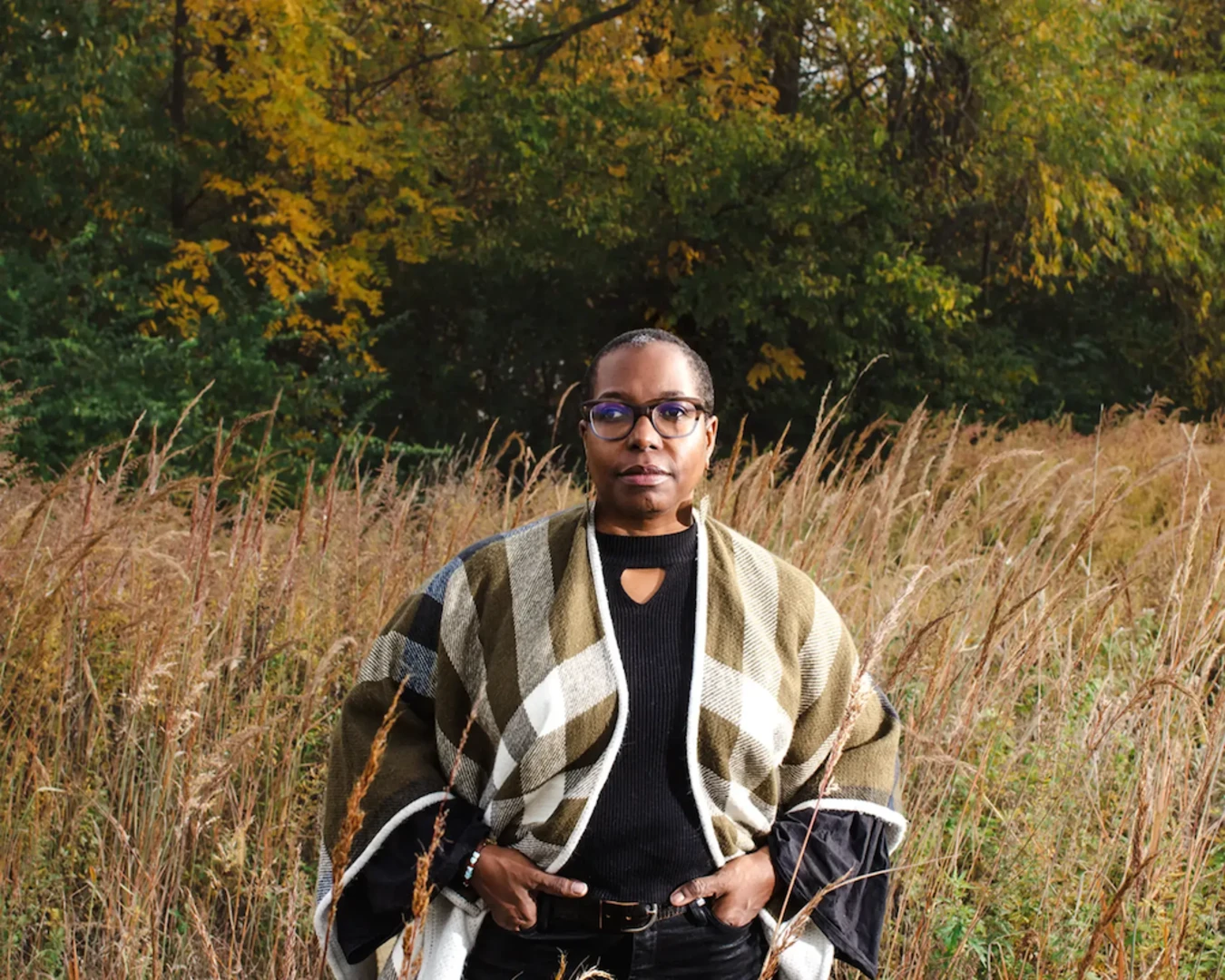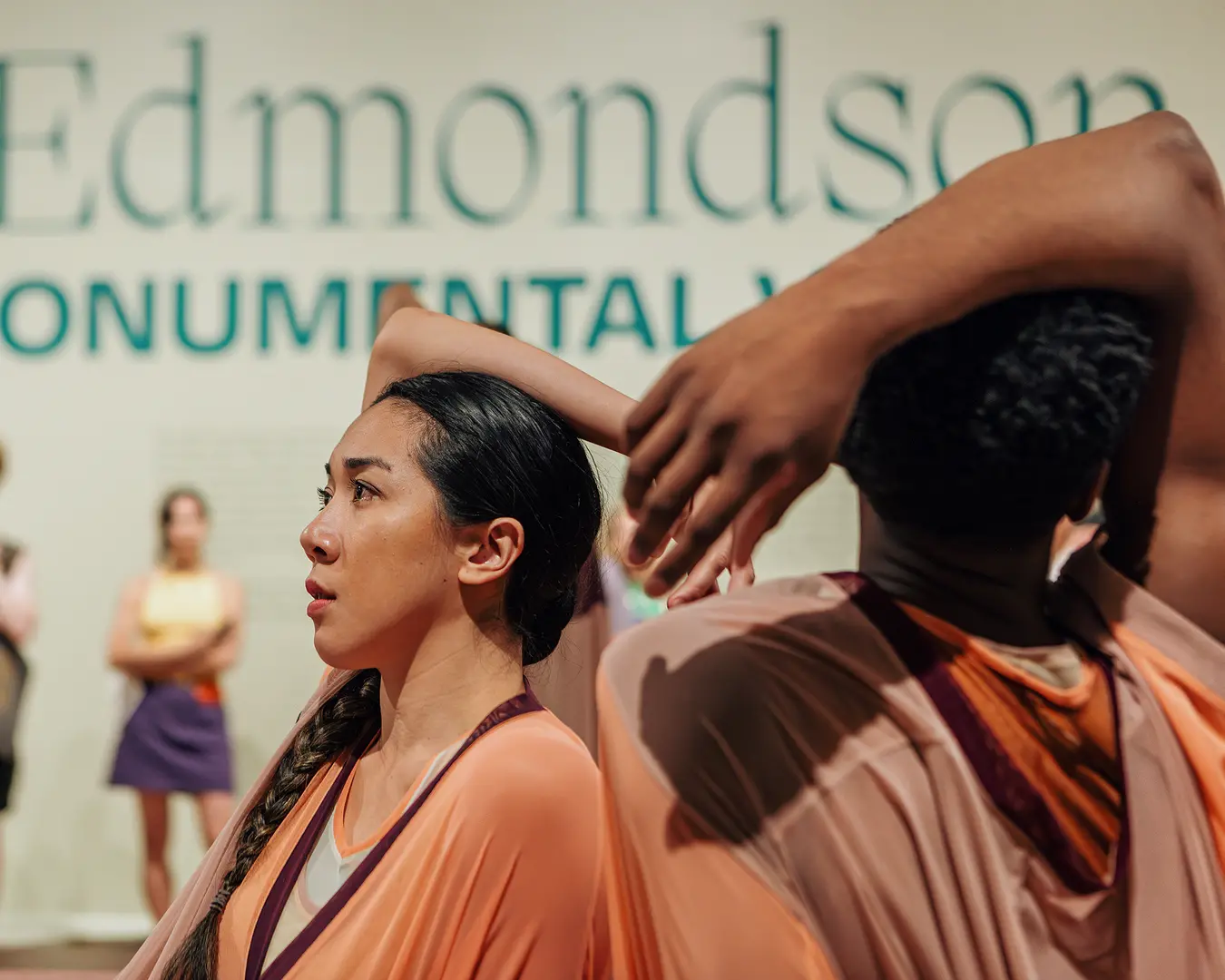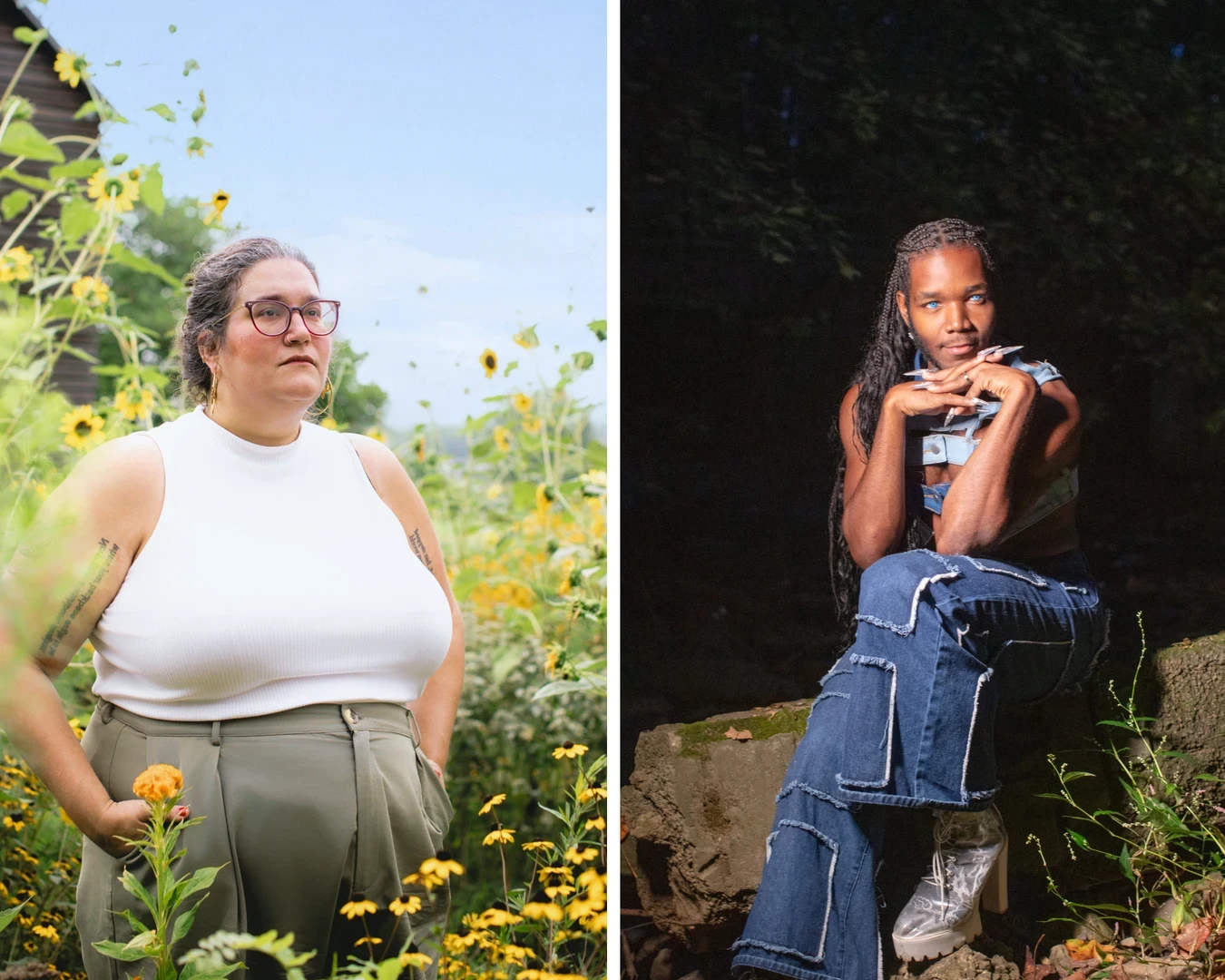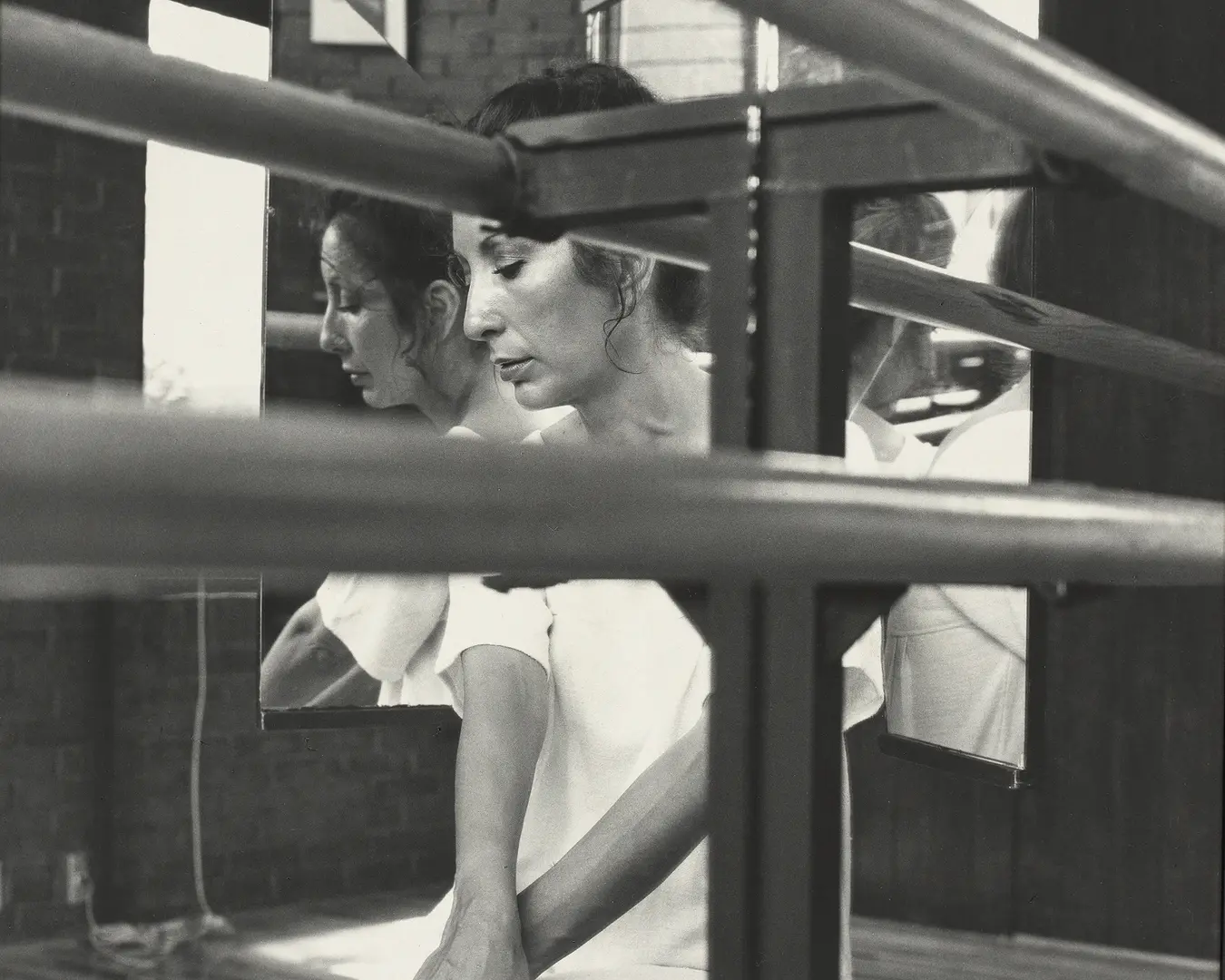Our “Pew Fellow of the Week” series focuses on the artistic lives of our Fellows: their aspirations, influences, and creative challenges.
Composer and violinist Diane Monroe (2018) spoke to us about the musical lineage of her work and her family, as well as the influence of her mentors and Philadelphia public school music education. Her cross-genre work bridging European classical, American jazz, and African musical traditions has included engagements with artists and groups such as Pew Fellows Bobby Zankel, Odean Pope, and John Blake; Harlem Symphony Orchestra; and Bang on a Can All Stars. Monroe has been leading her own ensembles for more than 15 years.
Her evening-length suite Violin Woman, African Dreamsis slated for a late-2019 debut. Supported by a Center Project grant, the piece is inspired by museum and historic house collections in Philadelphia’s Germantown neighborhood.
How did you become an artist? Is there a particular experience that drove you to this choice?
I’ve always known a strong connection with music, which was ever-present in our house. In addition to my mother and uncle playing the piano and singing, my grandfather was an exceptional guitarist. My grandmother’s nephew Howard Carroll, also a guitarist, was a founding member of the gospel group the Dixie Hummingbirds.
Ever since learning melodies by ear on the piano at the age of three from my uncle Artie (especially the boogie-woogie and strains of Thelonious Monk’s “Blue Monk”), I just knew that that’s what I wanted to do. When I was four, I began piano lessons. Once I’d started the violin at eight, my piano teacher gave me a special violin lesson—because he moonlighted as a string teacher, too. Afterwards, he essentially said that I should probably just stick with the violin! However, as fate had it, my parents made me stick with those piano lessons until age 16.
Your work bridges several genres of music, including classical string repertoire, jazz and blues improvisation, and contemporary experimental music. What do you think of as your musical lineage, and how does it affect the way you compose, improvise, and perform?
The phrase “music is music” has been stated here and there by many extraordinary musicians throughout history. I subscribe to the idea that each culture contributes its own approach to expressing and maneuvering around the same twelve musical tones or pitches (and all in between them). Each cultural expression is just a part of a larger collective whole expression: music. So, that’s the lineage—a vast pool of musical expressions intersecting due to sympathetic vibrations and more, regardless of whether we actually “get it” or not. I think that the more we can remain open to listening, the more we can hear the larger, greater expression. That notion seems to be planted in the middle ground of my mind whenever I’m attempting to create music, whether it is spontaneous music or music that is written down.
What is your biggest motivator as an artist? What is your biggest fear?
What motivates me is simply being able to communicate through this amazing language we call music, as corny as that sounds! To feel something within a sound you’re creating—and realize afterwards that someone has been moved by it—is the greatest experience and the greatest gift ever.
My biggest fear is being on stage without confidence. Been there, done too much of that! It took me a long time to trust that all those hours in the practice room would show up well in performance. You could say that it’s a matter of trusting and letting go. I learned that practicing how to relax, how to be free, and how to let go—enabling the expression to come forth—is worth equally as much, if not more, than perfecting a “technique” on any instrument.
Why do you choose to work and live in Philadelphia? In your experience, what makes this arts scene distinctive?
I was born and raised in Philadelphia. I attended public schools in West Philadelphia in the 1960s and 70s at a time when musical training sustained an extremely high level of excellence. Often, we’d receive one-on-one mentoring by members of the Philadelphia Orchestra and by other unsung musical genius mentors like conductor and clarinetist Burdis Coleman or violinist and conductor Angelo Frascarelli. Once I went away to college, I found that Philly public school training had actually over-prepared us for college, from orchestra rehearsals to classroom theory. The legacy of the training and special quality of Philadelphia artists is with me always, and I love the feeling of striving to live up to such a rich history of incredible music-making.
What quality do you most admire in another artist?
An ability to make me lean forward and listen, or to make me want to dance, or to make me experience the world in a different way, to make me ask questions about myself or about things I have yet to understand.
What music are you listening to, and/or which books are on your bedside table?
Music of the late, great pianist Geri Allen; East Indian music; Flamenco and Tango music of Diego Cigala; Bela Bartok; Afro-Cuban music; and the music of any new composer (of any genre) I’m interested in at the time. Books on the history of African presence in early western Europe; Edgar Cayce; Chinese Tonic and North American Herbs; The Music of Life by Sufi master Hazrat Inayat Khan; and the poets Rumi and Hafiz.
In reflecting back to the beginning of your career, what is the most useful advice you ever received?
Master teacher and violist Karen Tuttle once told me to play the violin like I played my guitar. She wasn’t being literal, but she was trying to teach me to relax and be comfortable with my instrument. I felt completely at home with the guitar, unfettered and unbound, but didn’t realize I could feel the same with the violin. It just takes a hell of a lot of work. Tuttle said to dance with it, to play it with ease, and to allow the body to be an unencumbered vessel for utmost expression.
I was blessed with three amazing women mentors. Along with Karen Tuttle, I credit the extraordinary Eurhythmics artist and Dalcroze protégé Inda Howland, gifted vocalist and pianist Rachel Adonaylo, and all who embodied philosophy, teachings, and extraordinary musicianship similar to that of the legendary cellist Pablo Casals. But the most direct advice came from my own mother, who said and continues to say, “Play it the way you feel it.”
